For 364 days of the year the Chemin des Chapelles climbs up the side of Mont Mosan but on Wednesday the road its renamed the Mur de Huy, the “wall of Huy”. The climb is so steep it deserves mural adjective and few races see riders cross the finish line in such obvious agony. But can the race deliver more than a three minute climax?
This year’s route includes a new climb right before the end to split up the field and the presence of several star names indicates that this mid-week race matters because because the finish is identical to Stage 3 of the Tour de France.

The Route: it’s all about that finish but there’s plenty of climbing before. The course resembles a clockwise spiral, starting in Waremme and looping around to Huy. The Mur de Huy is scaled three times. The Côte de Bohissau – better known to locals as La Flîme – is the longest climb, 2.4km at 5.5% with a steep middle section.
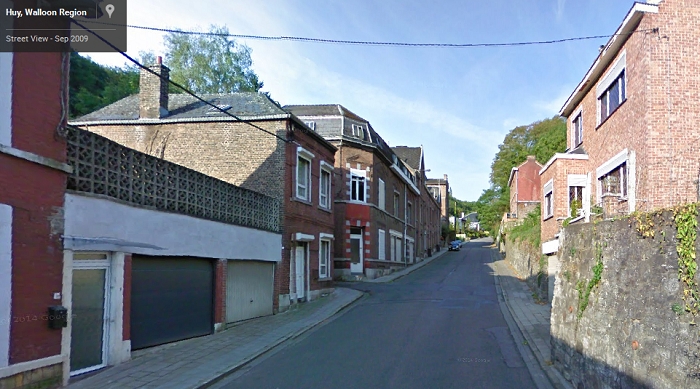
New for 2015 is the the Côte de Cherave, just 5.5km from the finish. It’s 1.3km at 8% average but mostly over 10%. It’s steep, the kind where you see the gradient illustrated by the way each house is higher than the next. It marks a big change from the traditional “valley” approach to the Mur de Huy when the race would run parallel to the sleepy Meuse river for several kilometres, a flat section that allowed teams to operate like sprint trains and place their leaders. Now they’ll face a disruptive climb – there are cobbles and a level crossing at the start, what could go wrong? – and then the descent before only a brief passage alongside the Meuse before the Mur de Huy. It’s exciting but a word of caution, it’s wide and straight, hardly a launchpad and anyone attacking over this climb could hope to take 10-20 seconds but sustaining an advantage up the Mur de Huy is almost impossible. Cherave looks like a defensive feature where it’s all about placing and a rider too far back is out of the race.
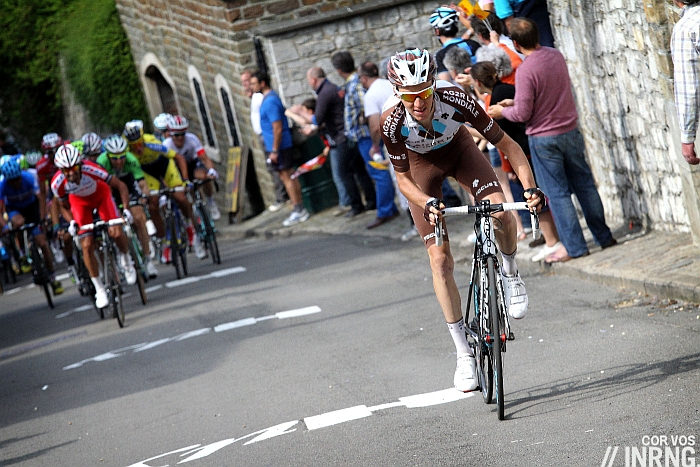
The Finish: 1.3km at 9.6% doesn’t sound like much. But beware the average as this climb starts off slow when riders pass under the flamme rouge and then rises up. Take the inside line on one of the corners and the slope reaches 26% and if you have the luxury of choosing your line then it is only 19%… but longer. The road is very narrow so few get to pick their line.
Riders use gears like 39×25 or even 27 for the climb. Once you reach the last 300m the gradient eases up and some have been known to deploy the big ring. The effort is supreme and requires maximal effort but also supreme restraint. Ideally you want to be the first to surge clear but to leave the effort as late as possible. Contradictory? Yes, everyone will be at their absolute max going to the finish line and even the slightest acceleration requires a big increase in force. Launch too early and you will blow. But if you cannot follow the leaders as soon as the steep part starts then you’re out.
This makes the final two minutes extremely complicated as riders try to balance lactic acid and oxygen debt with tactical finesse whilst surveying their rivals. If you watch on TV I don’t think there’s another race where the riders all have such a pained look on their faces.
The Contenders
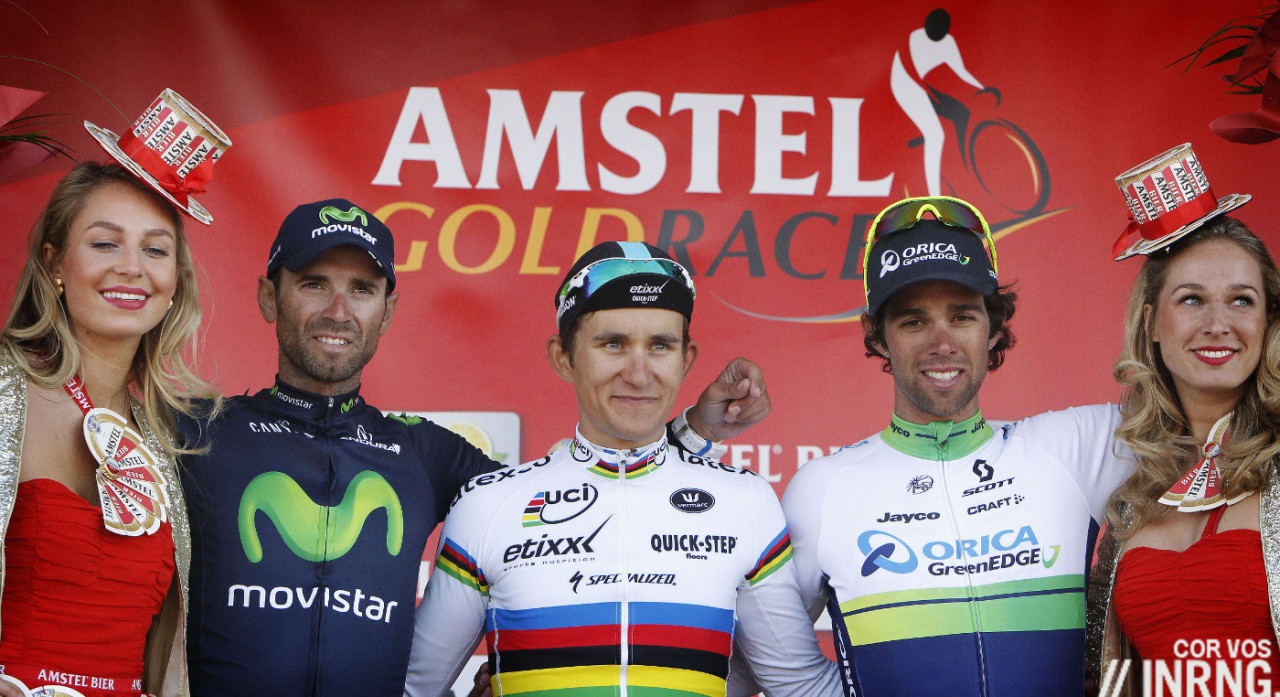
Alejandro Valverde (Movistar) is the prime pick. Last year’s winner is in sizzling form again and knows exactly what to do in the finish. The hillier run to the line will suit him even more. But there’s no such thing as an automatic win, timing the sprint to the line is vital but it’s easy to be blocked by others on the climb.
Michał Kwiatkowski (Etixx-Quickstep) is the next pick. Third last year he’s back in 2015 and stronger than ever. This counts double because experience matters so much for this climb, it’s all about timing. His win in the Amstel wasn’t a stealthy sprint from the peloton, he was among the best up the Cauberg too.
Dan Martin has finished 6th, 4th and 2nd here and his progress suggests a win is invitable. He’s not shown much form but last year he crashed out of the Amstel and didn’t have any notable results either but went second. He’s particularly suited to the finish, he can surge up a steep slope better than almost anyone. Some logical types will take 6-4-2 and suggest zero as the next number so let’s hope he’s not DNF. Team mate Tom Jelte Slagter is in good form too, there few team tactics to deploy, just doubled chances for Cannondale-Garmin.
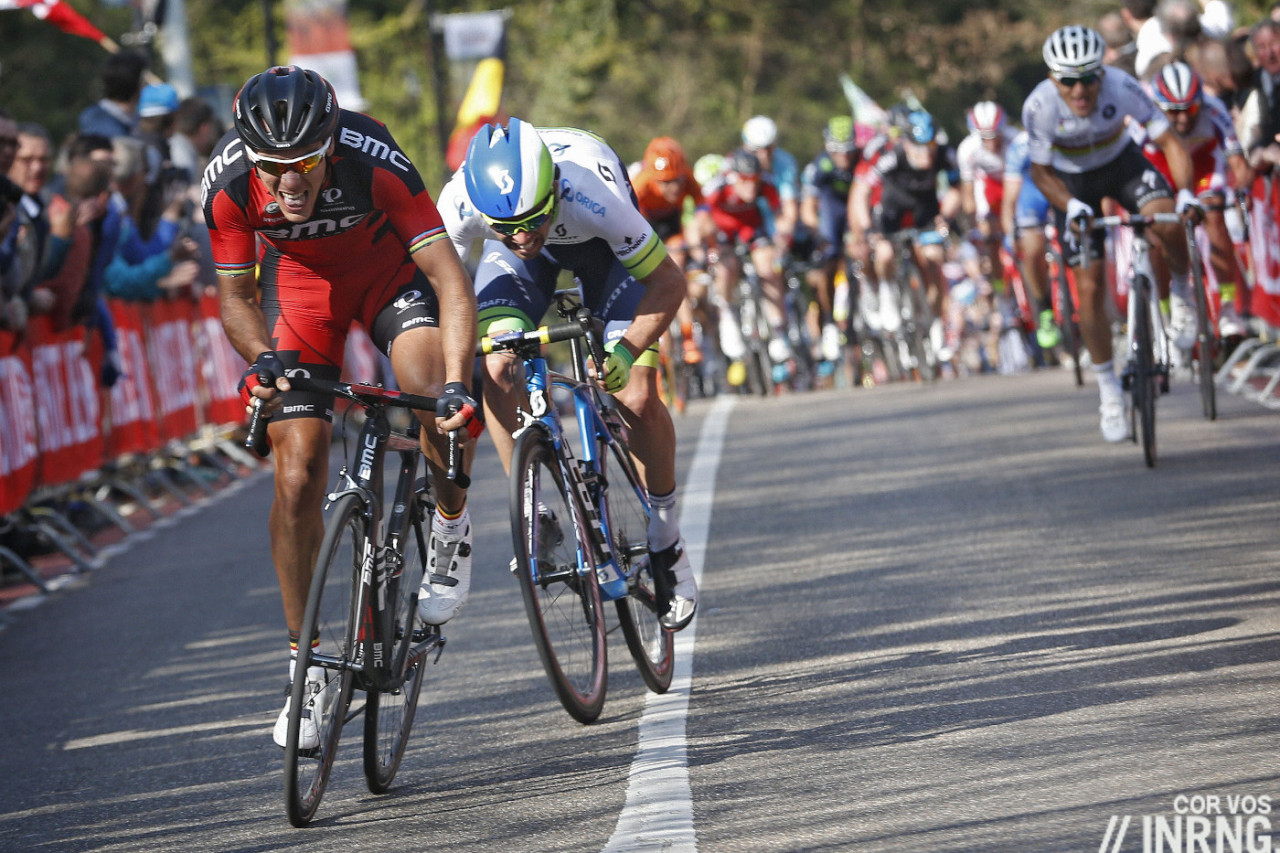
Has Philippe Gilbert still got it? He got beaten last Sunday but it turns out his time up the Cauberg was as good as ever, he only “lost” the race because he got up the Cauberg to find Michael Matthews on his wheel; had the Australian not been able to follow things could have been different. But never mind the Cauberg counter-factuals here is a climb with the finish at the top. Expect BMC Racing to be active again.
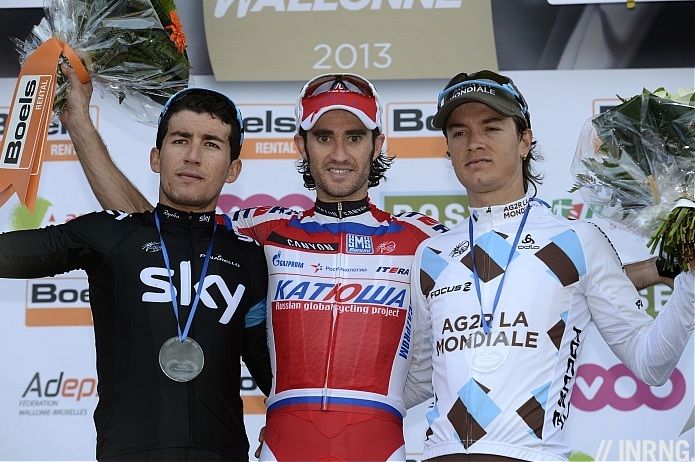
Sergio Henao is Team Sky’s best bet, he was aggressive in the Tour of the Basque Country and has finished on the podium here before. Chris Froome has ridden the last few events and never got on well and his participation is uncertain, he might ride for recon purposes. Lars Petter Nordhaug and Wout Poels bring more options but might need to try a breakaway to succeed.

Joaquim Rodriguez got the experience thanks to a win in 2012 and two second place finishes but he seems to have lost a little of his zip with age. Once again he might have won the Vuelta al Pais Vasco but this wasn’t by out-climbing everyone with his searing accelerations it was in the longer time trial stage. Better suited to Liège-Bastogne-Liège he’s still a very dangerous rider here. Katusha team mate Dani Moreno has won here too and could strike again.
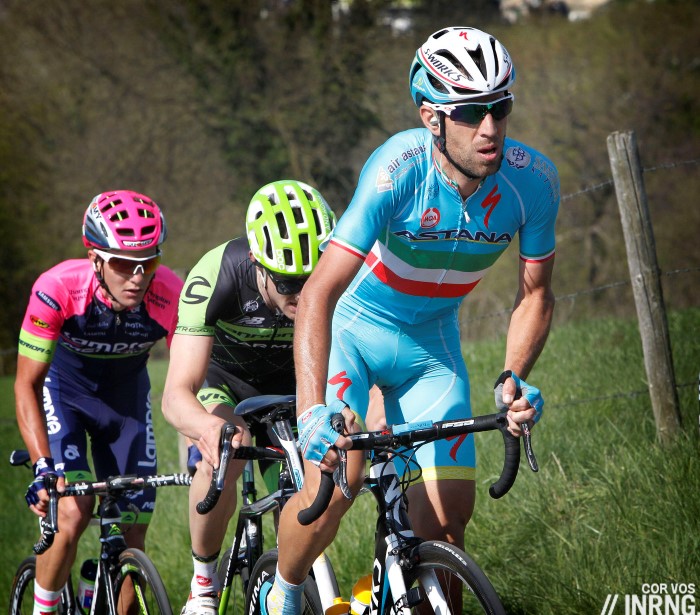
Vincenzo Nibali might fancy another burst as he builds towards his goal of winning Liège-Bastogne-Liège although the UCI’s Licence Commission could be his biggest threat with Astana’s hearing set for Thursday. Nairo Quintana will be fun to see but he’s not such a zippy rider, his big gear style is better suited to long efforts uphill.
Lotto-Soudal have a very good squad with several promising riders. Jelle Vanendert has placed here before but doesn’t seem to be so strong right now, Tim Wellens is probably their best bet ahead of Tony Gallopin while Thomas de Gendt is the breakaway specialist and neo-pro Louis Vervaeke is worth watching.
Julian Arredondo rode this race for the first time in 2014 and finished 11th and now he can put his experience into a two pronged attack for Trek Factory Racing with Bauke Mollema, fourth last year. Rui Costa is great on longer climbs, another tip for Liège ahead of this one. Pierre Rolland is a dark horse pick, the Europcar rider has just won the Vuelta a Castille y Léon and is peaking for the Ardennes classics, I can’t see him outsprintin anyone up the final climb but he could try a longer range raid. Finally one outside pick is Simon Yates of Orica-Greenedge, he had an excellent time in the Basque Country, especially on the ludicrous slopes to Aia. His team will need to have spent the previous few days showing him clips of how to win this race, to surge but not too soon.
| Alejandro Valverde | |
| Michał Kwiatkowski | |
| Dan Martin, Sergio Henao, Philippe Gilbert | |
| Joaquim Rodriguez, Bauke Mollema | |
| Slagter, Arredondo, Yates, Wellens, Rui Costa, Nibali, Gasparotto |
Weather: a typical Ardennes spring day, 16°C and sunny with a light breeze from the north, one forecast says 15km/h and another promises 25km/h. Neither are enough to shred the field as it races through woodland but if the wind does get up there are a few exposed sections to exploit.
TV: live coverage starts at 2.15pm Euro time with the finish forecast for 4.35pm. It’s an ASO race so notionally available on the same channel you watch the Tour de France. If not there’s Eurosport… if not you’ll find streams via cyclingfans.com and steephill.tv.
Criquielion: as the race crosses part of Belgium’s French-speaking Walloon region it’s worth remembering Claude Criquielion who died in February. “Crique” was one of Wallonia’s best ever riders. Twice winner of this race he also took the 1987 Tour of Flanders and the 1984 World Championships. Triumphant yet tragic he was also famous for losing races, for example the 1987 Liège-Bastogne-Liège when he and Stephen Roche were riding to the finish and toyed around for so long that Moreno Argentin flew past to poach the race from them. A similar story for the 1988 World Championships where, again on home soil, he lost out, this time after tangling with Canada’s Steve Bauer in the sprint.
Women’s Race: Huy is not the most scenic place but it’s worth visiting for the race because the Mur allows you to see the men’s race several times but also the women’s race. We saw Pauline Ferrand-Prévot break through last year and she’s a strong pick having won a French mountain bike race by over four minutes. Second in 2014 Lizzie Armitstead has just had a stomach bug but is otherwise enjoying a strong start to the season. Elisa Longo-Borghini is another pick and it promises a tactical battle between Wiggle-Honda, Boels-Dolmans and Rabo-Liv. You can see a dedicated preview at Velofocus.com.
Flèche: it’s French for arrow, a poetic way to imagine the race crossing the Walloon landscape.

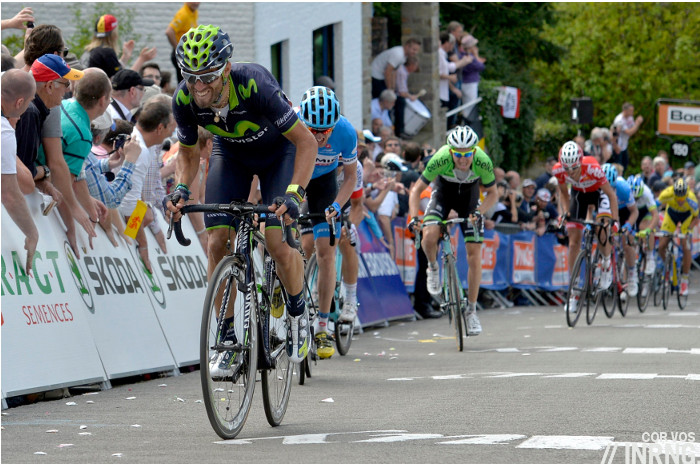
Well done for the review of the women’s event too !!
Seconded, although I would add that Longo Borghini crashed at Gelderland so possibly not at her best. Mara Abbot might be Wiggle’s back up having won Redlands the other day?
Moolman for Bigla is a previous winner and decent shout too.
The most beautiful race in the whole year
Dan Martin and Cannondale sure could use a win here. I can’t recall even SEEING them in a race this year, never mind fighting for a win…
The team really isnt having too much like so far this year – 2 guys down in a crash in the TTT at Trentino this afternoon, it seems
Nathan Haas was in the Nibali breakaway @ Amstel Gold. Meanwhile Martin has been active. Cannondale’s a team which basically punted on the spring classics. They focus their chips elsewhere.
They also have a slender budget, they can’t buy in many big names. But this Ardennes week is important for them, it’s perfect terrain for Dan Martin.
Sigh, the money problems at the top of the sport seem particularly dire lately, legit sponsor funding having fled to such a degree.
A breakaway win was mentioned a few times – how often has this race been won via a breakaway? Do we think (on balance) that this may happen, or would we expect it all to come back together?
The last rider to have won from a breakaway was Igor Astarloa in 2003
Mr. Rng, no love for Nathan HAAS for La Fleche? He was steady in Amstel and finished with the peleton, and could be considered a justified co-leader here with Dan Martin. If it comes to the final climb with your top 4, I don’t believe anyone would back him straight-up against them, but he would be a very viable “plan B” option to send up the road to keep Dan Martin protected if it comes back together.
I think he was more suited to the Amstel and the Brabantse Pijl last week whereas Slagter was very strong on the slopes of Aia in the Tour of the Basque Country. He could well try a longer-range breakaway, Navardauskas might be good for this too.
No worries for the level crossing, Belgian railway is on strike tomorrow 😉
ha
I have to admit, its my favourite week of racing.
Amstel Gold – Fleche Wallone – LBL
My heart says Martin; my head says Kwiatkowski or maybe Gilbert (as revenge); and all of me says please not Valverde.
+1
I can’t understand how anyone can cheer for Valverde victories in good conscience.
A+1
Well, I can. Despite his tactical défaillances, he’s a very good rider, with a lot of class, who has shown more than once that his victories didn’t rely just on doping. Which, paradoxically enough, can’t be said for many riders who haven’t ever been caught. If I had to pick one rider out of personal preference, Valverde wouldn’t be the first one (nor the second 😉 ), that’s for sure, but I’m always ready to cheer when a technically good cyclist wins a race.
urgh not valverde
Ouch! I thought the côte de Cherave was in fact another street getting to the village of Cherave up the hill. It is called “Rue entre 2 thiers”, very narrow and almost as steep as the mur de huy, this would have been the kind of thing that would have made a break before the mur more possible. Organizers should maybe consider it for coming editions.
Now, I don’t think the actual Côte de Cherave will change the usual scenario. It seems straight and wide.
Martin or Valverde for me. These may be famous last words, but I don’t think Kwia will have his sights on this – I’d put him in a second rank of possibles including all of those noted above
How about Kennaugh as a dark horse for top ten?
Only 2nd day of racing for Kennaugh since his return on Sun from 2 months out with his hip problem. DNF’d on Sun. Cant see him up there tomorrow, personally.
(he’ll go and show me up now)
Will the tour riders doing Flèche (eg Froome, Quintana, Pinot) when they usually wouldn’t, treat this like a classic and attack early or treat it like they would in the tour this year-try to lose the least amount of time to the winner as possible by doing very little?
I think Froome will be riding it more for reconnaisance than anything. Team leader is Henao.
Ditto, Quintana – riding for Piti.
So whatever tactics best suit the team’s objectives, I guess.
This used to be my favorite classic, despite the lack of distance. The finish made my legs hurt just watching: the cruelty of the finish being SO close yet almost unreachable. A war of attrition ending in a head-to-head test of suffering.
But it’s become a virtual pack sprint. Basically the riders with sufficient near the position spin their little gears up the hill and someone wins. It’s still an exciting finish, but with the race coming down to the final kilometer every single time, it’s lost any notion of scope. As usual I’ll probably check steephill and download a video after the race. But really I have little incentive to watch more than 3 km.
For this race the key question is: did Kwiakowski ride a tactical finish on the Cauberg, exploiting Michael Matthews marking Gilbert? Or was he simply unable to follow? If the latter he’s not likely to win here. But if the former he’s an excellent pick.
As for Amstel Gold, why not both? I think Matthews hanging onto his wheel stopped Gilbert from soloing to the win, and Kwiatkowski couldn’t match those two, it wasn’t tactical, he looks down and seems to see he’s gone into the red and backs off. Then Gilbert pulls off and allows Matthews to go through and seems to slow, looking around as Valverde, then others join up over the top of the Cauberg until a small bunch forms, from which Kwiatkowski had the winning burst of speed.
Had Matthews stayed back in the pack it probably would have been a repeat of last year, a solo Gilbert win, so in that sense Matthews’ move allowed Kwiatkowski to take the victory. If Matthews had elected not to come through for Gilbert and allow the reduced peloton to form and save some energy the Aussie probably would have won as he was the fastest finisher in that group, but that’s bike racing.
Yeah — there was a LOT of interesting stuff going on in those last 3 km of Amstel Gold. But when bike races all come down to the last 3 km that’s not so good for interest. This is why Paris-Roubaix and Flanders are so popular: there’s attrition happening over a much greater portion of the course. “Back in the day” it was essentially always a small group, for example 2, arriving at the base of the Huy the last time. And with the shift to pack finishes, you can see a jump, starting in 2004 when Rebellin won, in climbing speeds here. It used to be 3:10 was typical, now sub-2:50 is common and it’s never as slow as 3:00. You don’t see the agonizingly low cadence as riders fatigued from riding in a break push their oversized gears up the impossible slope, pushing threw the wall of pain to reach the top before the other guy, then collapsing just past the finish. Good stuff.
According to Cycling Weekly, Simon Yates has already done his homework. In an interview he said that he used love watching how these guys won the Flèche. Too much to ask of a neo-pro but You never know.
Thanks, there’s something heartening about a young rider knowing these races already.
What! Pros resorting to 39 / 25! What would us mortals use?
Thumbs up for covering the womans race.
For locals there’s a cable car to get to the top although it stopped a while ago and I don’t if it’s restarted.
Riding up it is ok, locals will have low gears anyway for all the hilly climbs and you can take your time, it’s racing up that is so tough, to go so hard on the regular 8-10% section, then force through the 20% bit and then sprint.
Discounting Rodriguez on the basis that he only won the Tour of the Basque Country in the time trial is a red herring if ever there was one considering said time trial finished up a climb that makes the Mur de Huy look like a mole hill.
That’s sort of my point, he can turn on the power for 5-50 minutes these days when in the past he was unbeatable for 3-4 minute moves. Still it’s all relative, he’s still the sixth pick and a win is easily plausible.
In the grander scheme of things, he has lost a tiny amount of explosivity and replaced it with better speed endurance. if he jumps at the right time he will definitely still be in the mix. its his absolute top end thats always been lacking so when a sharp hill flattens off he often doesn’t quite have enough to stay away. Still a phenomenal rider.
In other races, like AGR and LBL, I think the final kilometers may be reshuffled in some way in order to make more interesting races. However, as far as the flèche wallonne is concerned, I don’t think so. The final on the mur de huy is too emblematic, I cannot imagine it removed. Even if it always produces the same scenario.
Adding some very steep hills (there are some very near to huy) to be climbed just before the mur de huy may in turn be a good idea.
Dan Martin will be very close on this one and win on Sunday. There is my prediction plain and simple and i have bet my house on it.
Crash Wallonne!
Inrng was strangely prophetic concerning Dan Martin. Valverde gets his third win nine years after his first.